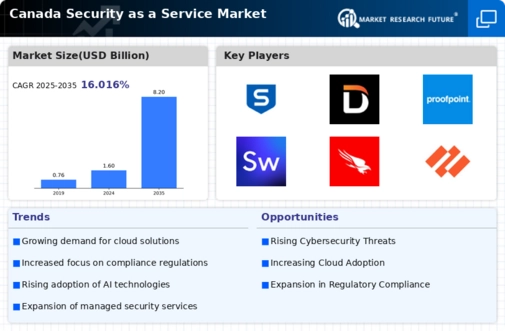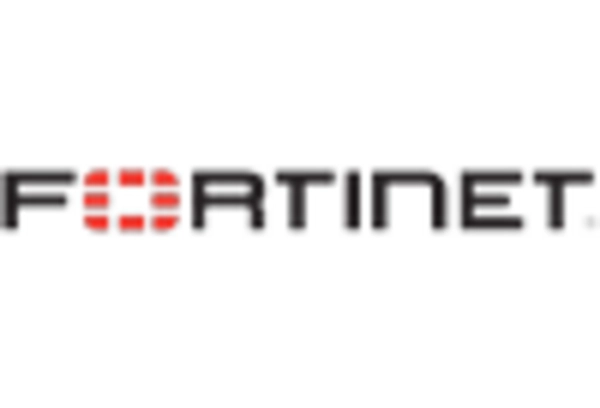Growing Cyber Threat Landscape
The security as-a-service market in Canada is experiencing growth due to an increasingly complex cyber threat landscape. Organizations are facing a surge in cyberattacks, including ransomware and phishing, which have escalated in frequency and sophistication. According to recent data, Canadian businesses reported a 30% increase in cyber incidents over the past year. This alarming trend compels companies to seek robust security solutions, driving demand for security as-a-service offerings. The ability to quickly adapt to emerging threats is crucial, and security as-a-service providers offer scalable solutions that can be tailored to meet specific organizational needs. As businesses recognize the importance of proactive security measures, the market is likely to expand further, with an emphasis on real-time threat detection and response capabilities.
Regulatory Compliance Pressures
Regulatory compliance is a critical driver influencing the security as-a-service market in Canada. With the introduction of stringent data protection laws, such as the Personal Information Protection and Electronic Documents Act (PIPEDA), organizations are under increasing pressure to ensure compliance. Failure to adhere to these regulations can result in hefty fines and reputational damage. Security as-a-service providers offer solutions that help organizations meet compliance requirements efficiently. By utilizing these services, businesses can implement necessary security controls and maintain audit trails, thereby reducing the risk of non-compliance. The market is likely to see heightened demand as organizations prioritize compliance in their security strategies, recognizing that effective security measures are essential for safeguarding sensitive data and maintaining customer trust.
Shift Towards Remote Work Security
The shift towards remote work has significantly impacted the security as-a-service market in Canada. As more employees work from home, organizations face new security challenges, including securing remote access and protecting sensitive data outside traditional office environments. This transition has led to an increased reliance on security as-a-service solutions that can provide comprehensive protection for remote workforces. According to industry estimates, approximately 60% of Canadian companies have adopted remote work policies, necessitating robust security measures. Security as-a-service providers are well-positioned to offer scalable solutions that address the unique vulnerabilities associated with remote work, such as endpoint security and secure access controls. As remote work becomes a permanent fixture for many organizations, the demand for these services is expected to grow.
Integration of Artificial Intelligence
The integration of artificial intelligence (AI) into security solutions is emerging as a key driver for the security as-a-service market in Canada. AI technologies enhance threat detection and response capabilities, enabling organizations to identify and mitigate risks more effectively. Security as-a-service providers are increasingly incorporating AI-driven analytics to improve their offerings, allowing for real-time monitoring and automated responses to security incidents. This technological advancement is particularly appealing to organizations seeking to bolster their security posture without significantly increasing their operational burden. As AI continues to evolve, its application in security services is likely to expand, further propelling the growth of the security as-a-service market. Organizations that leverage AI capabilities may gain a competitive edge in their security strategies, making this integration a pivotal factor in market dynamics.
Cost Efficiency and Resource Optimization
Cost efficiency is a significant driver for the security as-a-service market in Canada. Many organizations are shifting from traditional security models to as-a-service solutions to optimize their resources and reduce operational costs. By leveraging cloud-based security services, companies can avoid the substantial upfront investments associated with on-premises security infrastructure. Reports indicate that organizations can save up to 40% on security expenditures by adopting as-a-service models. This financial incentive is particularly appealing to small and medium-sized enterprises (SMEs) that may lack the budget for extensive security measures. Furthermore, the subscription-based pricing model of security as-a-service allows for predictable budgeting, making it easier for organizations to allocate funds effectively. As cost considerations remain paramount, the market is poised for continued growth.

















Leave a Comment